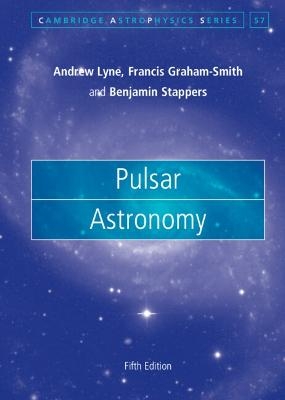
Pulsar Astronomy
Cambridge University Press (Verlag)
978-1-108-49522-6 (ISBN)
After more than half a century since their unexpected discovery and identification as neutron stars, the observation and understanding of pulsars touches upon many areas of astronomy and astrophysics. The literature on pulsars is vast and the observational techniques used now cover the whole of the electromagnetic spectrum from radio to gamma-rays. Now in its fifth edition, this volume has been reorganised and features new material throughout. It provides an introduction in historical and physical terms to the many aspects of neutron stars, including condensed matter, physics of the magnetosphere, supernovae and the development of the pulsar population, propagation in the interstellar medium, binary stars, gravitation and general relativity. The current development of a new generation of powerful radio telescopes, designed with pulsar research in mind, makes this survey and guide essential reading for a growing body of students and astronomers.
Andrew Lyne has been at the forefront of pulsar research for over 50 years. He has discovered over two-thirds of the known pulsars, has more than 400 publications to his name and has several awards including the Herschel Medal of the Royal Astronomical Society and the Descartes Prize of the European Union. He is a Fellow of the Royal Society and was Director of Jodrell Bank Observatory (1997–2007). Francis Graham-Smith was Astronomer Royal (1982–1990), Physical Secretary of the Royal Society (1988–94), Director of the Royal Greenwich Observatory (1976–81) and Director of Jodrell Bank Observatory (1981–88). He is the senior author of textbooks on optics and radio astronomy. The fifth edition of Pulsar Astronomy is the product of over 50 years of close collaboration in research at Jodrell Bank Observatory. Ben Stappers is a Professor of Astrophysics at the University of Manchester. He has been at the forefront of many aspects of pulsar astronomy from how they emit through to their use as gravitational wave detectors. He has been involved with the development and commissioning of pulsar instrumentation for telescopes including LOFAR, WSRT, Lovell, MeerKAT and the SKA. He currently holds a European Research Council Advanced grant for searching for pulsars and fast transients.
Preface; Part I. Pulsar Astronomy: 1. The Discoveries; 2. Telescopes Techniques, Radio to TeV; 3. Receiver Techniques and Data Analysis; 4. Surveys and Population; 5. Pulsar Timing; 6. Timing and Astrometry of Binary Pulsars; 7. The Distances of the Pulsars. Part II. Observed Physical Characteristics: 8. Pulse Profiles; 9. The Variability of Pulsar Emission; 10. Millisecond Pulsars; 11. Magnetars; 12. Thermal X-rays from Neutron Stars. Part III. Neutron Star Physics: 13. Neutron Stars; 14. Radius and Mass; 15. Glitches, Timing Noise, Slowdown Switching; 16. Location and Geometry of Emitters; 17. The Emission Mechanisms; Part IV. Environments and the Interstellar Medium; 18. Supernovae and their Remnants; Pulsar Wind Nebulae; 19. Interstellar Scintillation and Scattering; 20. The Interstellar Magnetic Field; 21. Prospects; References; Index.
| Erscheinungsdatum | 22.09.2021 |
|---|---|
| Reihe/Serie | Cambridge Astrophysics |
| Zusatzinfo | Worked examples or Exercises |
| Verlagsort | Cambridge |
| Sprache | englisch |
| Maße | 174 x 250 mm |
| Gewicht | 870 g |
| Themenwelt | Naturwissenschaften ► Physik / Astronomie ► Astronomie / Astrophysik |
| ISBN-10 | 1-108-49522-2 / 1108495222 |
| ISBN-13 | 978-1-108-49522-6 / 9781108495226 |
| Zustand | Neuware |
| Haben Sie eine Frage zum Produkt? |
aus dem Bereich


